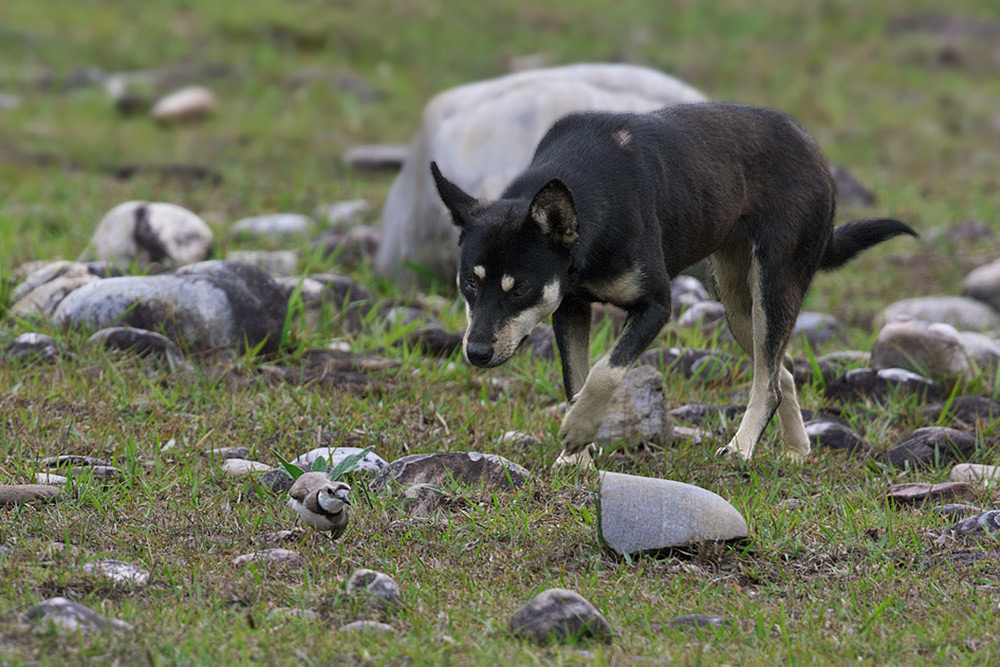 "
"
On 4th May, 2016 we were birding at Sangti Valley near Dirang, West Arunachal, mainly with the intent of seeing Long-billed Plovers (a rare bird in the subcontinent). This is one of the few locations in India where this bird can be seen. Upon reaching there we found a couple of birds in the fields along the bank of the river and not on the riverbed, where they are usually seen. More surprisingly, it seemed that they were being chased by a couple of stray / feral dogs. After a while it became clear that they were trying to distract the dogs — typical of a ground nesting bird trying to protect its nest.
Worryingly, I witnessed similar incidents during all my birding trips this year. I started the year in Phobjikha valley, central Bhutan where the dogs seemed to be a significant cause of disturbance for more than 300 wintering black-necked cranes. In March I was watching Bengal floricans at Koklabari on the edge of Manas National Park, Assam, which is another place where feral dogs are a threat to the critically endangered birds. In early May, in Mandala, Western Arunachal, my attempt at seeing a Temminck’s tragopan was thwarted by a dog who rushed down a slope from where a bird was calling.
The Sangti (or Shangti) valley is at an elevation of 1600m and forms a dry inner valley with pine stands and cultivation cloaking it. The Sangti river produces both gravel banks and sand banks along its length in the valley, providing suitable habitat for ibisbill, long-billed plover and wintering wallcreepers. The flat marshlands contiguous with the banks of the river, although cultivated with rice, form the only wintering area in India for black-necked cranes as well as black-tailed crakes.
Editors note: See the lengthy list of dogs posing a menace to wildlife.

 CI is a non-profit, non-commercial portal that aims to facilitate wildlife and nature conservation by providing reliable information and the tools needed to campaign effectively.
CI is a non-profit, non-commercial portal that aims to facilitate wildlife and nature conservation by providing reliable information and the tools needed to campaign effectively.
Chosen as 'Picture of the Week'
The all pervasive domestic or feral dog poses an increasing threat to wildlife; not just to mammals but birds too, especially many threatened or endangered species.